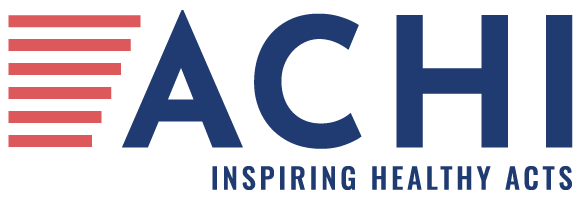
A new report finds that 38.9% of adult Arkansans were obese in 2024, reflecting no statistically significant change from 2023, when 40% of Arkansans were classified as obese.
“State of Obesity 2025: Better Policies for a Healthier America,” released October 16 by Trust for America’s Health, uses 2024 data collected by the Centers for Disease Control and Prevention’s (CDC) Behavioral Risk Factor Surveillance System to identify key obesity trends at the state and national levels.
According to this year’s installment of the annual report, in 2024 Arkansas had the fifth-highest adult obesity rate among the 50 states and the District of Columbia, and it was among 19 states with adult obesity rates at or above 35%. In last year’s report, Arkansas had the third-highest obesity rate in the nation. Despite some fluctuation in the state rankings, no state had a statistically significantly change in its adult obesity rate between 2023 and 2024, according to this year’s report. However, a state-specific fact sheet issued alongside the report shows that Arkansas’s obesity rate has increased significantly since 2011, when 30.9% of Arkansas adults were obese.
The report also notes that 15% of Arkansas adults had diabetes in 2024 and that this represents a statistically significant increase from 2019, when 13.6% of Arkansas adults had diabetes. Diabetes is closely linked to other health indicators such as obesity, physical inactivity, and hypertension. A meta-analysis published in Diabetes and Metabolism Journal in June found that greater consumption of ultra-processed foods is associated with higher risk of type 2 diabetes. This year’s State of Obesity report includes a featured section on ultra-processed foods that discusses considerations and next steps for addressing consumption of these foods and improving nutrition.
Steps for Addressing Consumption of Ultra-Processed Foods
- Improving consumer understanding of ultra-processed foods and their health effects through the Dietary Guidelines for Americans and other educational efforts.
- Amending food nutrition labeling to note when packaged food is classified as ultra-processed.
- Placing restrictions on the marketing of ultra-processed foods to children.
- Creating financial incentives and disincentives (i.e., subsidies and taxes) to encourage purchases of unprocessed or minimally processed foods and discourage purchases of ultra-processed foods.
- Improving nutrition standards for school and child nutrition programs to increase consumption of unprocessed or minimally processed foods and reduce consumption of ultra-processed foods, as well as new financial incentives and funding to boost capacity for “made-from-scratch” cooking at schools and other institutions.
- Altering benefits in food security and nutrition assistance programs to increase consumption of unprocessed or minimally processed foods and reduce consumption of ultra-processed foods.
- Encouraging voluntary reductions in the production of ultra-processed foods by the food industry or instituting restrictions or prohibitions on particularly harmful types of food processing, ingredients, or subgroups of ultra-processed foods.
Policy Recommendations
The report also offers policy recommendations for reducing obesity in the U.S. Among others, these include:
- Strategically dedicating federal resources to efforts that reduce obesity and related conditions, including increasing funding for the CDC’s chronic disease and obesity prevention programs, increasing funding for initiatives aimed at reducing health disparities, and addressing economic factors that contribute to obesity.
- Decreasing food and nutrition insecurity while improving the nutritional quality of food by reversing cuts to the Supplemental Nutrition Assistance Program, or SNAP; ensuring full funding for the Supplemental Nutrition Program for Women, Infants, and Children, or WIC; and strengthening school nutrition standards.
- Changing the marketing and pricing strategies that lead to poor health outcomes by placing restrictions on the marketing of unhealthy food to children and discouraging the overconsumption of sugar through tax policy.
- Making physical activity and the built environment safer and more accessible to all by funding school programs that support physical education and safer schools, requiring the U.S. Department of Health and Human Services to publish physical activity guidelines for Americans at least every 10 years, and continuing to fund active transportation programs such as Complete Streets, an initiative focused on addressing safety to support people walking, biking, and using transit.
- Working with the healthcare system to close disparities and gaps in clinic-to-community settings by reversing Medicaid cuts, not implementing Medicaid work requirements, maintaining Affordable Care Act marketplace subsidies, expanding Medicaid coverage of weight management and obesity-related services, and prioritizing strategies to address health-related social needs.
Childhood Obesity in Arkansas
Arkansas Act 1220 of 2003 spearheaded initiatives to address obesity among school-age children in the state. Under the law, which has been amended over the years, public schools must collect height and weight measurements for every student beginning in kindergarten and continuing in each even-numbered grade thereafter (a provision in the law allows parents to opt out). These measurements are used to determine each student’s body mass index (BMI) and BMI percentile, i.e. how the student’s BMI compares to other children of the same gender and age. This information is provided to parents and guardians to help them determine whether to engage with a health professional for further advice.
ACHI collects and analyzes this information, publishing an annual report on childhood obesity in Arkansas. Schools and school districts use these reports to inform wellness initiatives, apply for grants, and support health education efforts. At the state level, the reports help identify trends, shape policies to address childhood obesity, and evaluate program effectiveness.
Our most recent report, which covers the 2023-24 school year, indicates that approximately 23% of Arkansas public school children are classified as obese, 17% are classified as overweight, 58% of are classified as having a healthy weight, and 2% are classified as underweight.
Further Discussion
ACHI Medical Director Dr. Arlo Kahn, who has focused on obesity and the impact on public health for much of the past 25 years, sat down to discuss the latest “State of Obesity 2025” report for our “Wonks at Work” podcast. You can listen here.






